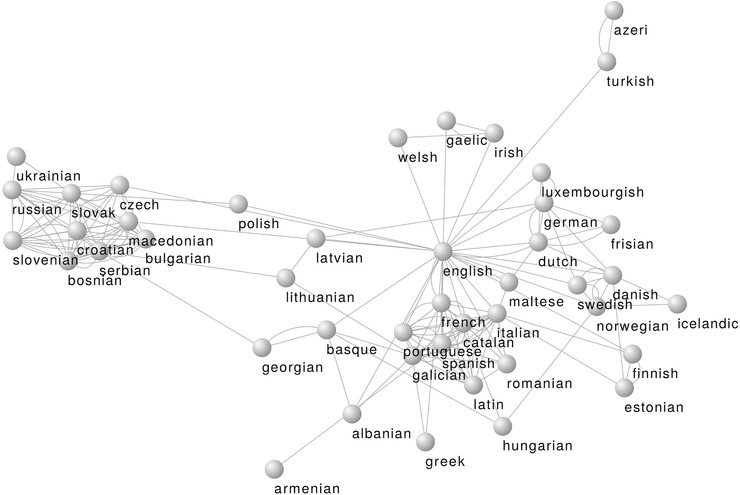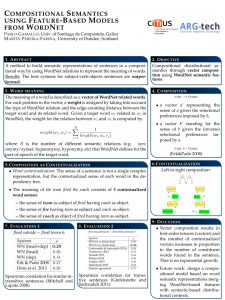You can translate sentences with phrasal verbs into Spanish with our
Author: compmt_admin
Dependency parsing: DepPattern
The Journal Information Processing & Management has just published our article about DepPattern, a syntactic parser based on dependencies.
DepPattern is released under GPLv3 license in github.
DepPattern is the syntactic parser used by our CompMT system.
A map to measure distance amongst main European languages
This research was carried out by a group of experts from the CITiUS, Imaxin|Software, a Galician company and IXA NLP Group, from the Basque Country.
The team measured the quantitative distances of 44 European languages, allowing them to create the above graph, where each node represents a language and the edge represents the distance between the node on the node on the other side.
A extended review can be found in the Galician newspaper galiciaconfidencial.
Attendance at the EACL 2017
The EACL 2017 Conference was hosted at the Valencia Conference Centre from April 3 to April 7, 2017. This is a Core A conference. We have presented several pieces of research in different co-located workshops and sections. Two of them are directly related to the CompMT project:
The Diachronic explorer
A demonstration to show the Diachronic Explorer. This is a system using distributional models to search for the historical changes in meaning of all words in Spanish.
Material:
The paper can be found below or in the EACL website.
Compositional semantics using feature-based models from WordNet
A poster describing a system to perform compositional semantics with WordNet-based representations and distributional information.
Material:
The poster and the paper can be found below. The paper can be found on the EACL website too.
Distributional Semantics and Compositional Translation on Research Insider
Today Pablo Gamallo showed to the CiTIUS community the basis of the “Semantics and Compositional Translation”. A brief summary of the presentation, as the slides used in it, can be found below.
The current strategies in statistical and neural machine translation rely on the use of parallel and aligned corpora, as well as on non-compositional phrase segmentation. However, other strategies are possible, namely the use of non-parallel bilingual corpora and compositional segmentation; a new translation method that requires building the contextual meaning of sentences by making use of distributional models in a compositional way.
In this talk, the key aspects and the main applications of compositional distributional semantics will be explored. For instance: how to build the composite meaning of “red car” from the senses of its constituent words if each word is defined as a vector of linguistic contexts in a distributional model? Special attention will be paid to a new method for machine translation based on distributional models and compositional semantics. From this point of view, translating is the process of paraphrasing in a bilingual space.
Slides:
The compositional strategy of CompMT
The Corpus Linguistics and Linguistic Theory journal has just published our paper “The role of syntactic dependencies in compositional distributional semantics” . In this paper, we describe the compositional strategy of CompMT.


